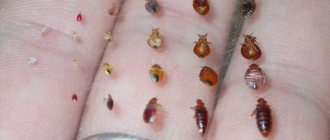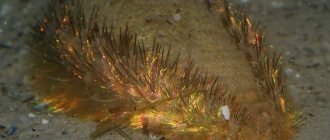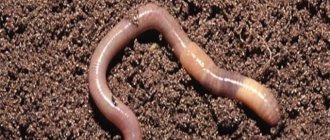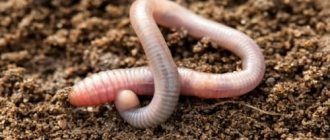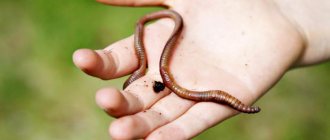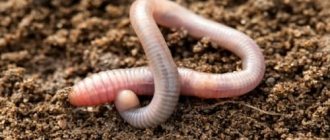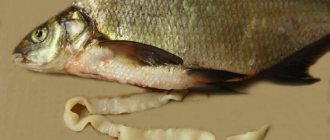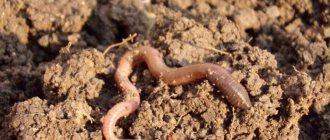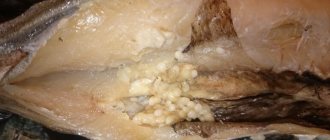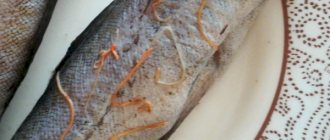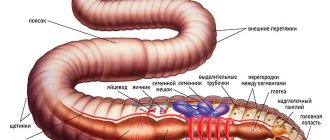Worms
Worms are representatives of the class of invertebrate animals of the subkingdom Multicellular of the Animal Kingdom.
They are characterized by an elongated oblong body, with a front and a back part. Today there are a huge variety of different types of worms. They differ from each other in appearance, size, habitat, method of reproduction, type of respiration, type of nutrition. What all worms have in common is the presence of a skin-muscular sac that covers the body and performs a protective function. There are the following types of worms depending on body shape:
- flat;
- ringed;
- round.
Their body is covered with three germ layers, which give rise to the development of all organs and tissues. These are ectoderm, endoderm and mesoderm.
- parasitic;
- tape;
- oligochaetes;
- polychaete;
- rain.
Benefit
When we see a blooming garden, we understand that to some extent it is thanks to earthworms that enrich the soil with nutrients. These creatures process organic matter in the soil, turning it into nutrients that are easily absorbed by plants.
When earthworms dig, they plow the soil at the same time, which allows roots to grow, allowing for healthy plant growth. Tilled soil absorbs water and holds it inside. In addition, air circulates better in such soil. The movements of earthworms bring nutrients found deep in the soil to the surface. Nutrients enter the upper layers of the soil, where they are easier for plants to absorb.
In addition to the benefits that earthworms bring to plants, they also serve as food for birds. In early spring, birds fly to gardens precisely in search of worms, because at this time of year there are still no fruits or seeds that could serve as food for them. If an earthworm is placed in a container that does not allow light to penetrate, it will live in it for about two weeks, provided that peat moss is first placed in the container.
There are millions of earthworms. They are divided depending on their properties and location. They can be divided into: earthworms, red worms, field worms, nightworms and red hybrids. In one garden you can find several varieties of worms.
Earthworms come in a variety of colors and sizes. Their color is characterized by shades of gray, black, red or red-brown. Their length, as a rule, is 5 - 31 cm. And in some cases you can find worms of incredible length of about 370 cm, such as individuals living in Australia. Moist soil rich in nutrient-rich organic matter is ideal for worms.
Earthworms feed on insects, rotting animal carcasses, manure, lettuce and watermelon rinds. In most cases, earthworms avoid alkaline and acidic substances. However, their food preferences depend on their species. Nightworms, as their name suggests, scavenge for food from the surface after dark.
the remains of herbs and organic matter make up the diet of the worms. Having discovered food, they begin to dig in the ground, holding the food they find in their mouths. Worms really like to combine food with soil. Many earthworms, such as red worms, crawl to the surface of the soil in search of food.
Gardeners can help earthworms thrive by adding organic matter to the soil. When the organic content of the soil decreases, earthworms go in search of other soil with more favorable conditions, otherwise they will simply die. Proteins from the remains of worms are converted into nitrogen and feed plants. However, this benefit is very short-lived. The death of earthworms implies a deterioration in the condition of the garden, such an important role they play in nourishing the soil.
Earthworm or earthworm. schizoform
What is worm breath
Respiration is the process of oxygen entering the body, its use in the oxidation of nutrients and the release of carbon dioxide from the body, as well as the transportation of these gases within the body. The process of gas exchange is the absorption of oxygen from the environment and the release of carbon dioxide.
Aquatic worms absorb oxygen from the water in which it is dissolved, while terrestrial worms absorb oxygen from the atmospheric air.
Respiratory organs are present only in a small number of worms; basically, they can breathe over the entire surface of their body. Under the thin skin there are many blood vessels through which oxygen enters the blood and carbon dioxide is expelled.
In most worms, the respiration process proceeds as follows: oxygen enters the cells through the surface of the body. Most worms do not have specialized respiratory organs.
Extraction system
Flatworms have an excretory system that takes the form of protonephridia. With their help, the process of osmoregulation and metabolism occurs. The selection system takes the form of channels that branch and combine into 1-2 channels. Initially, these are stellate-type cells, which, branching into tubules, open a lumen for the passage of a bundle of flagella. Merging, the tubules form a larger structure and are brought out in the form of excretory pores to the surface of the body. Such excretory systems are called protonephridial. Metabolic products that are dangerous to the life of the worm are excreted along with fluids through the above-mentioned protonephridia, as well as with the help of special parenchyma cells - atrocytes, which play the role of “storage buds”.
Peculiarities of worm breathing
Most worms do not have a respiratory system. Respiratory organs are found in only a small number of them. Oxygen dissolved in water or air penetrates the surface of the worm's body, and the resulting carbon dioxide is removed outside.
Most often, oxygen necessary for breathing enters the body through moist skin. Thus, in annelids, oxygen enters the capillaries located under the cuticle from the skin epithelium.
In worms with a circulatory system, such as annelids, respiration involves blood flowing to the surface of the skin or gills. There it is freed from carbon dioxide and saturated with oxygen, which is subsequently transported throughout the body.
Due to their low mobility, worms do not require large amounts of oxygen.
Types of worm respiration
According to the type of respiration, all worms can be divided into aerobic (living in an oxygen environment) and anaerobic (living in an oxygen-free environment). Anaerobic organisms do not require oxygen to oxidize nutrients. In aerobic organisms, the process of oxygen entering cells occurs due to the permeability of cell membranes and diffusion. Diffusion is the process of equalizing the concentration of oxygen inside the body and in its environment.
During aerobic respiration, as a result of complex processes, energy is extracted from nutrients, and oxygen supplied from outside is used to oxidize glucose molecules. It occurs in mitochondria and is characteristic of complex organisms.
Anaerobic respiration occurs without the participation of oxygen; organisms receive energy for life from organic and inorganic substances. The process of anaerobic respiration is similar to fermentation.
Respiratory organs of worms
Worms do not have specialized respiratory organs. They absorb oxygen at the surface of the body. Accordingly, it can be argued that the main respiratory organ of worms is its skin. This is most clearly manifested in flatworms.
In roundworms, oxygen is also absorbed by the intestinal tissues. In conditions of oxygen starvation, they are able to switch to anaerobic respiration.
Some polychaete worms developed the first respiratory organs - gills. These are thin-walled leaf-shaped, bushy or feathery outer outgrowths of part of the dorsal lobes of the parapodia, penetrated by blood vessels.
Internal secretion
Special substances – hormones – are responsible for the chemical stimulation of individual body systems and the manifestation of the vital activity of the body. The process of their formation is called internal secretion. Vertebrates have an endocrine system (its glands are the adrenal glands, the pituitary gland, and the thyroid gland). Worms do not have such glands.
The endocrine organs of invertebrates are different parts of the nervous system. For example, adrenaline (a nerve agent that moves the muscles of the walls of blood vessels) is produced by the ganglia of the ventral nerve cord. And in higher vertebrates, adrenaline is produced in the central part of the adrenal glands.
The nerve cells of the suprapharyngeal ganglion of worms perform an intrasecretory function. They regulate the activity of the gonads and are activated during regeneration processes.
Breathing of flatworms
These worms are classified as protostomes. The type of flatworms is divided into the following classes:
- free-living ciliated (marine, terrestrial and freshwater planarians);
- parasitic flukes (trematodes);
- parasitic tapeworms (cystodes).
Free-living flatworms respire as aerobes, while parasites respire as anaerobes. The most common representatives of flatworms are:
- liver flukes;
- cat flukes;
- frog flukes;
- pork tapeworm;
- bovine tapeworm;
- Echinococcus.
They can be found in salt and fresh water bodies, in places with high humidity. Worms of this species can also parasitize vertebrate and invertebrate animals.
Most flatworms do not have a respiratory system with respiratory organs; they breathe through the entire surface of the body. Individuals living in an environment with little oxygen can breathe anaerobically.
Respiration of aerobic flatworms occurs by diffusion, that is, the interpenetration of gases, evenly over the entire surface of the body. Breathing over the entire surface area of the body is responsible for the flat shape of the worms. Oxygen transport is carried out by their branched intestines.
Breathing of annelids
Annelids get their name due to their elongated body, reaching a length of up to 15 cm and consisting of a large number of divided segments resembling rings. Each body segment has major organs or parts. Thanks to this, if 2-3 rings are damaged, the annelid worm does not die.
Annelids differ from other types of worms in the high organization of their nervous system, the presence of a closed circulatory system, and the presence of a secondary body cavity.
Among the most famous representatives of annelids are:
- oligochaetes, or oligochaetes;
- leeches (false horse, fish, horse, snail and medical);
- misostomids;
- polychaete worms or polychaetes.
Many annelids are characterized by cutaneous respiration. Gas exchange occurs across the entire surface of the body. Oxygen penetrates the worm's body through numerous capillaries. Carbon dioxide, which is formed in the tissues, is also removed through the skin. Due to this feature, annelids live in moist soil, and after rain they crawl to the surface.
Annelids live in fresh water bodies, salty seas and moist soil.
Myzostomida class, Myzostomida
Misostomidae
(
Myzostomida
) - a subclass of annelids of the polychaete class;
Some zoologists classify Myzostomidae as a separate class. Commensals (parasites) or parasites of echinoderms (crinoids, starfish and brittle stars). The parasitic lifestyle caused a simplification and change in structure compared to typical annelids. Body oval or disc-shaped; sizes from 0.5 to 12.5 mm. On the ventral side of the body there are 5 pairs of legs - modified parapodia ending in hook-shaped setae, with the help of which Mysostomids attach to the host animal. The brain is poorly developed; eyes are missing. Excretory organs - metanephridia (usually 1 pair). The circulatory and respiratory systems are absent. Misostomids are hermaphrodites; first their male gonads mature, then their female ones. A larva, a trochophore, emerges from a fertilized egg. Some Mysostomids are mobile and quickly crawl along the body of the host animal, others sit near its mouth or penetrate the intestines, and others are found in the integument of the host’s “arms” and disc, forming characteristic cysts. 7 families, uniting about 120 species; distributed mainly in tropical and subtropical seas. There are 6 species in the USSR, in the Barents, Kara, Bering, Okhotsk and Japan seas. (P.V. Ushakov.)
- Guide to Zoology, vol. 2., Mizostomids—L., 1940.
- Trait? de zoologie. Anatomie, syst?matique, biologie, t. 5, fasc. 1, P., 1959.
- .
Breathing of roundworms
Roundworms are characterized by a thin cylindrical body, elongated in length, pointed at both ends and round in cross section. It is covered with a skin-muscle sac, which is a dense multilayer cuticle of 9 layers, epithelial tissue and a layer of longitudinal muscles. The cuticle performs a protective function.
Representatives of roundworms include;
- roundworms;
- pinworms;
- Guinea worms;
- trichinella;
- hairy;
- nematodes;
- guinea worm.
They are characterized by anaerobic respiration, that is, they breathe over the entire surface of the body through its integument. In some types of roundworms, the energy necessary for life is released due to the breakdown of accumulated glycogen - organic matter.
Roundworms are found in fresh and salt water bodies, in soil, and they also parasitize plants and animals (roundworms, pinworms, nematodes).
Breathing of parasitic worms
A parasitic lifestyle is characteristic of many representatives of flat and roundworms. They parasitize plants, animals and humans. The size of parasitic worms varies from 1 mm in nematodes to 10 m in bovine tapeworms. They do not have specialized respiratory organs.
Most parasitic worms do not require oxygen to survive. Therefore, they are characterized by anaerobic respiration, that is, the breakdown of complex organic compounds in order to obtain energy without the participation of oxygen. Accordingly, respiration, that is, the processes of absorbing oxygen and releasing carbon dioxide, in parasitic worms occurs through the entire surface of their body.
Breath of tapeworms
Tapeworms are a type of flatworm. They can reach a length from 1 mm to 30 m and have a ribbon-like body, which is how they got their name. The body of tapeworms may consist of numerous segments or be unsegmented.
Tapeworms are endoparasites and primarily live in the intestines of humans or animals. They go through a complex development cycle associated with a change of hosts. These worms completely lack respiratory and digestive systems. Tapeworms are able to absorb nutrients throughout the entire body surface.
Tapeworms include bovine and pork tapeworms, broad tapeworms, and echinococci. Representatives of tapeworms are characterized by anaerobic respiration at the body surface as a result of the breakdown of glycogen and glucose.
Getting to know the muscles
The muscle tissue of flatworms is represented by a muscular sac, which lies under the epithelium. It consists of a number of layers of muscle-type cells that are not divided into muscles. However, some differentiation is observed in the areas of the pharynx and reproductive system. The outer part of the cells of the muscle layers are oriented transversely, and the inner ones are oriented along the posterior-anterior axis of the body. The outer muscles are called the annular layer, and the inner ones are called the longitudinal muscles layer.
Respiration of oligochaete worms
Oligochaetes or soil worms are one of the classes of annelids. Each segment of their body is covered with a small number of setae, the remainder of the parapodia. Oligochaete worms have digestive and circulatory systems, but no specialized respiratory organs.
These include:
- earthworm;
- tubifex;
- aporrectode;
- ripistes;
- stilaria;
- elosoma.
Oligochaete worms live in bodies of water or soil, with some individuals living in both habitats. Oligochaete worms do not have parapodia and antennae, unlike polychaete worms. They breathe diffusely over the entire surface of the body.
Fertilization and reproduction
The worms are hermaphrodites and reproduce only sexually through cross mating. The reproductive organs of earthworms occupy several segments of the anterior part of the body. Each individual has male and female organs - testes and ovaries.
Two worms put their bellies against each other, press together, exchange sperm, and then crawl apart. Each of the worms lays eggs in a cocoon, which is formed from mucus secreted by the girdle. The cocoon slides off the body, contracts at the ends and lies in the soil until the embryos fully mature. The eggs inside are reliably protected from dampness and germs. It turns out that a viable and independent juvenile earthworm emerges from the cocoon.
Usually the belt on the body of the worm is almost invisible, but during the mating period it swells, as it forms
